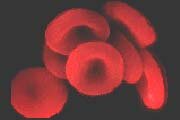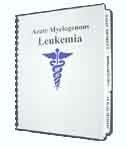 |
||
| HOME | ||
 |
||
| Acute Myelogenous Leukemia (AML) |
||
 |
||
| Other Leukemia Types (ALL / CLL / CML / HCL) |
||
 |
||
| Myelodysplastic Syndrome | ||
 |
||
| Symptoms and Diagnosis | ||
 |
||
| Leukemia Treatment Options | ||
 |
||
| " Chemotherapy | ||
 |
||
| " Blood Stem Cell Transplants | ||
 |
||
| " Radiation and Surgery | ||
 |
||
| " Chemo Side Effects | ||
 |
||
| " Clinical Trials Info | ||
 |
||
| " Coping with Leukemia | ||
 |
||
| " What to Ask Your Doctor | ||
 |
||
| Financial Assistance | ||
 |
||
| At Risk Jobs/Exposure | ||
 |
||
| Leukemia Resources | ||
 |
||
| Survivor's Story | ||
 |
||
| Leukemia News | ||
 |
||
|
Search for information:
|
||

|
Leukemia Cancer News - Return to Menu High-Voltage Cable Pylons 'double child cancer risk' The Childhood Cancer Research Group at Oxford University studied 70,000 children under 15 for the Department of Health report, half of whom had cancer. The seven-year study is reported in the Times and the Independent newspapers. The research looked at the prevalence of high-voltage power cables near children's homes. 'Surprising' results Children born or living near the power lines were 1.7 times more likely to contract leukaemia than those in the control group, the research found. Some studies have already shown an association between some types of electromagnetic fields and increased childhood leukaemia. Research author Dr Gerald Draper said other research suggested power lines might account for 20 to 30 of 500 cases of childhood leukaemia each year. But, he said, his work indicated a far smaller number of cases were affected. The findings were "surprising" and prompted further research, he added. The Department of Health said it would not comment on the findings until Dr Draper submitted his final report. Early Allogeneic Stem Cell Transplants Benefit Intermediate-Risk Acute Myeloid Leukemia French researchers have reported that allogeneic stem cell transplants in first complete remission (CR) benefit intermediate- but not good- or poor-risk patients with acute myeloid leukemia (AML). The details of an analysis of 17 years of study were presented at the 2005 Tandem BMT meetings in Keystone Colorado, February 10-14, 2005. The role of consolidation therapy with allogeneic stem cell transplants for patients with AML has been evolving and controversial. Allogeneic stem cell transplants are associated with more treatment related mortality than alternative therapies such as high dose cytarabine or autologous stem cell transplants but the rates of disease relapse are always lower than such alternatives. Recently, the decision to perform an allogeneic stem cell transplant in first remission has been based primarily on age and risk factors for relapse. Researchers in France have evaluated the outcomes of patients with AML under the age of 45 years who were assigned to receive an allogeneic stem cell transplant in first CR on the sole basis of having an HLA compatible donor. Outcomes were compared to patients without a suitable stem cell donor who received intensive chemotherapy consolidation or autologous stem cell transplant. Based on the risk factors of initial WBC, FAB subtypes, cytogenetic risk group and number of induction courses to achieve a CR, patients were categorized as poor-, intermediate- or standard-risk. The investigators evaluated outcomes by intent to treat and donor vs. no donor. They looked at the outcomes of 372 patients, of whom 182 had a donor. The median follow-up was 10 years.
Comments: These data confirm previous observations based only on cytogenetics, which have suggested that good-risk patients do not benefit from a transplant in first CR and should receive a transplant only if they relapse. This data is stronger than previous studies for intermediate-risk patients and strongly suggests that the majority of young patients with AML would benefit from an allogeneic stem cell transplants in first remission because the majority are intermediate-risk. However, this is not currently the standard of care in the US, where allogeneic stem cell transplants in first CR are usually reserved for poor-risk patients. The results of allogeneic stem cell transplants for poor-risk patients were better than the results of alternative therapies, but this was not statistically significant, with a p value of 0.29. However, since there are no good alternative therapies for poor-risk patients with AML, they probably should be enrolled on transplant programs if they have a donor, which can now include unrelated donors and umbilical cord blood. Reference: Jourdan E, Boidron JM, Dastugue N, et al. Ealrly allogeneic stem cell transplantation for young adults with acute myeloblastic leukemia in first complete remission: An intent-to-treat analysis of the long term experience of the BGMT group. Biology of Blood and Marrow Transplantation. 2005;11, number 2, supplement 1:17, abstract number 49. http://professional.cancerconsultants.com/oncol
|
|||||||||||||||||||
|
|


